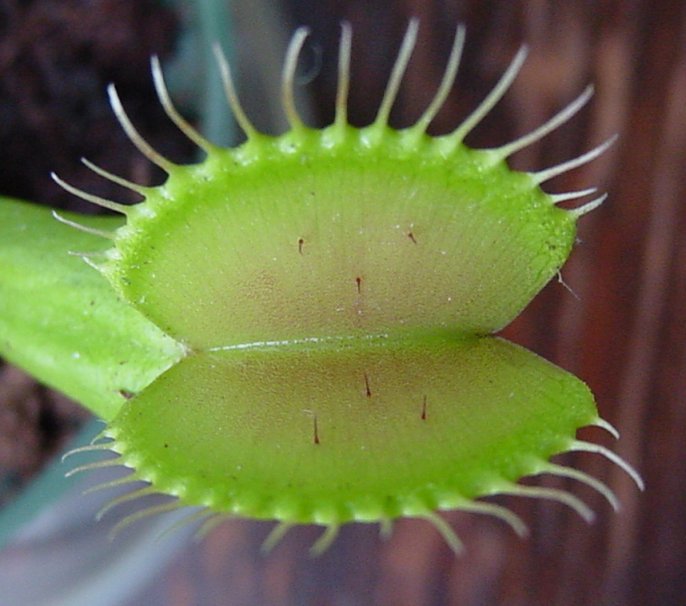
|
Ch. 2 Notes |

Links: |
Ch. 2 Plant Adaptations Plants make their own food. They take in sunlight through their leaves. They take in carbon dioxide through their leaves. They take in water through their roots. Plants have adaptations to help them take in sunlight. Many plants have wide, flat leaves. These plants grow where there is not much sun. In open, sunny areas, plants have smaller, thinner leaves. Roots have adaptations that help trees in two ways: 1. Roots soak up water that is deep underground. 2. Roots help the tree stand straight, and not blow over. Grasses have adaptations. Grasses have many, small shallow roots. These roots spread out near the surface. This helps collect as much water as possible on the dry prairie. What are growth adaptations? Tropism is a growth response to stimuli such as light and gravity. Phototropism is a plantís growth response to light. Gravitropism is the growth response of a plant to the earthís gravity. Climbing plants respond to contacting objects (like a fence). Climbing up a fence allows the plant to get sunlight and to support itself. Special Plant Adaptation Plants have physical adaptations that help them protect themselves and help them survive in their environment. Spines are adaptations that help protect plants from being eaten by animals. Some plants make poisonous sap. This keeps birds and bugs from eating it. The caterpillar of the Monarch buttery can eat this milkweed poison. Grasses /Adaptations / Why They are Helpful Short grass absorbs water near the surface. It is good because that is where rainwater usually stays. Tall grasses have long roots. These roots reach deep in the ground and can reach water. All grasses grow back when part of the plant is eaten. All grasses send up new shoots after a fire. |